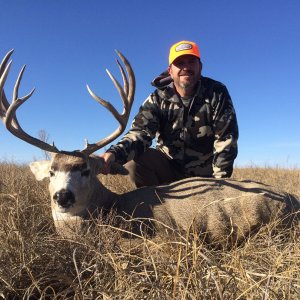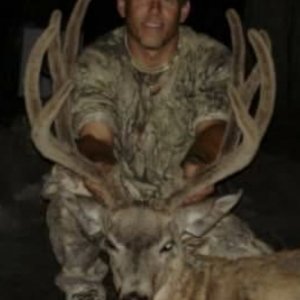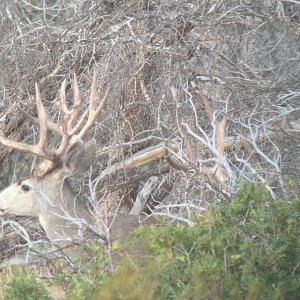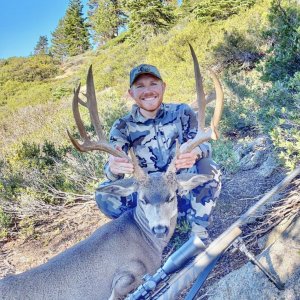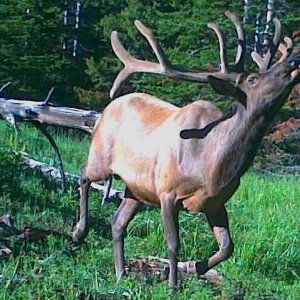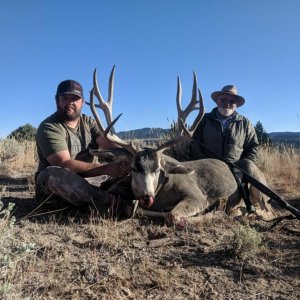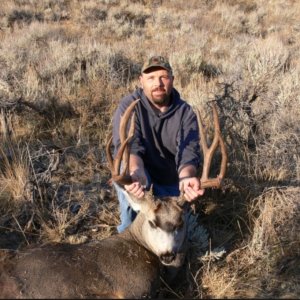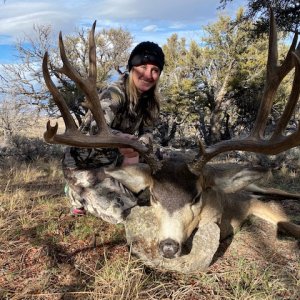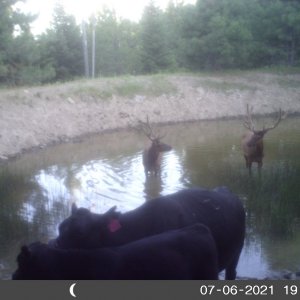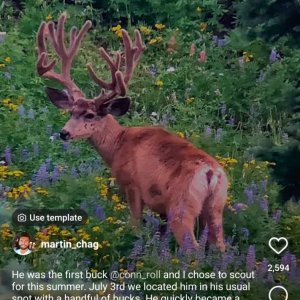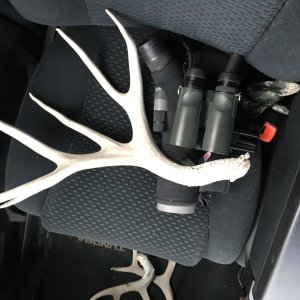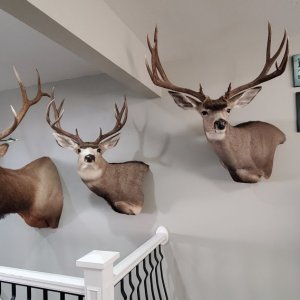T
TheElitehornhunter
Guest
In many areas of the west then ranges are being overtaken by cheatgrass which is very unproductive to wildlife such as deer. It's also a fire hazard.
Kochia is known to outcompete cheatgrass and deer love it.
We should be planting more and more Kochia. We have a little in some areas. but we need to do more.
"Nevada has several million acres of rangeland that is dominated by cheatgrass and other annuals.
This acreage is expanding every year with the major contributing factor being rangeland wildfires.
Many rangeland managers thought that if given time and protection from grazing, native grasses
would again dominate cheatgrass infested ranges. However, on low elevation rangelands (that
comprised of Wyoming big sage before burning), cheatgrass has remained the dominant plant.
Forage kochia can be an important tool for competing with cheatgrass, providing forage and habitat
diversity for wildlife and livestock, and helping to control fire."
"Forage Kochia as Livestock and Wildlife Forage
Forage kochia makes excellent feed for both wildlife and livestock. During winter periods or dry
seasons the protein content of grass drops below the typical required 8 percent level required by
most animals. Shrubs, such as forage kochia, are generally higher in protein than grasses. Forage
kochia?s protein content runs from 8-14 percent depending upon the time of year (Welch 1984). Its
protein level peaks in August around 14.7 percent and drops to a low of 8.9 percent in March
(Davis 1979 & 1985). Between August and March is when grasses are at their lowest protein
levels; thus forage kochia used with grasses at this time can complement the nutritional levels
required by livestock."
http://www.unce.unr.edu/publications/files/nr/other/FS9848.pdf
In the Dunphy Hills area (Elko BLM District) forage kochia, grasses and shrubs were seeded on degraded rangeland that was considered ?critical? winter habitat for mule deer. The first year after seeding, annual plants still dominated, however forage kochia was evident. Forage kochia becomes a stronger part of the plant complex, and after four years, evidence of Wyoming big sage, thickspike wheatgrass, and other native bunchgrasses and forbs were becoming visible. As a consequence mule deer fawn ratios have increased in recent year (Clements, 1994).
Forage kochia is one of the few plants found that can be seeded into cheatgrass ranges, establish itself, and over time out-compete cheatgrass.
Kochia is known to outcompete cheatgrass and deer love it.
We should be planting more and more Kochia. We have a little in some areas. but we need to do more.
"Nevada has several million acres of rangeland that is dominated by cheatgrass and other annuals.
This acreage is expanding every year with the major contributing factor being rangeland wildfires.
Many rangeland managers thought that if given time and protection from grazing, native grasses
would again dominate cheatgrass infested ranges. However, on low elevation rangelands (that
comprised of Wyoming big sage before burning), cheatgrass has remained the dominant plant.
Forage kochia can be an important tool for competing with cheatgrass, providing forage and habitat
diversity for wildlife and livestock, and helping to control fire."
"Forage Kochia as Livestock and Wildlife Forage
Forage kochia makes excellent feed for both wildlife and livestock. During winter periods or dry
seasons the protein content of grass drops below the typical required 8 percent level required by
most animals. Shrubs, such as forage kochia, are generally higher in protein than grasses. Forage
kochia?s protein content runs from 8-14 percent depending upon the time of year (Welch 1984). Its
protein level peaks in August around 14.7 percent and drops to a low of 8.9 percent in March
(Davis 1979 & 1985). Between August and March is when grasses are at their lowest protein
levels; thus forage kochia used with grasses at this time can complement the nutritional levels
required by livestock."
http://www.unce.unr.edu/publications/files/nr/other/FS9848.pdf
In the Dunphy Hills area (Elko BLM District) forage kochia, grasses and shrubs were seeded on degraded rangeland that was considered ?critical? winter habitat for mule deer. The first year after seeding, annual plants still dominated, however forage kochia was evident. Forage kochia becomes a stronger part of the plant complex, and after four years, evidence of Wyoming big sage, thickspike wheatgrass, and other native bunchgrasses and forbs were becoming visible. As a consequence mule deer fawn ratios have increased in recent year (Clements, 1994).
Forage kochia is one of the few plants found that can be seeded into cheatgrass ranges, establish itself, and over time out-compete cheatgrass.

